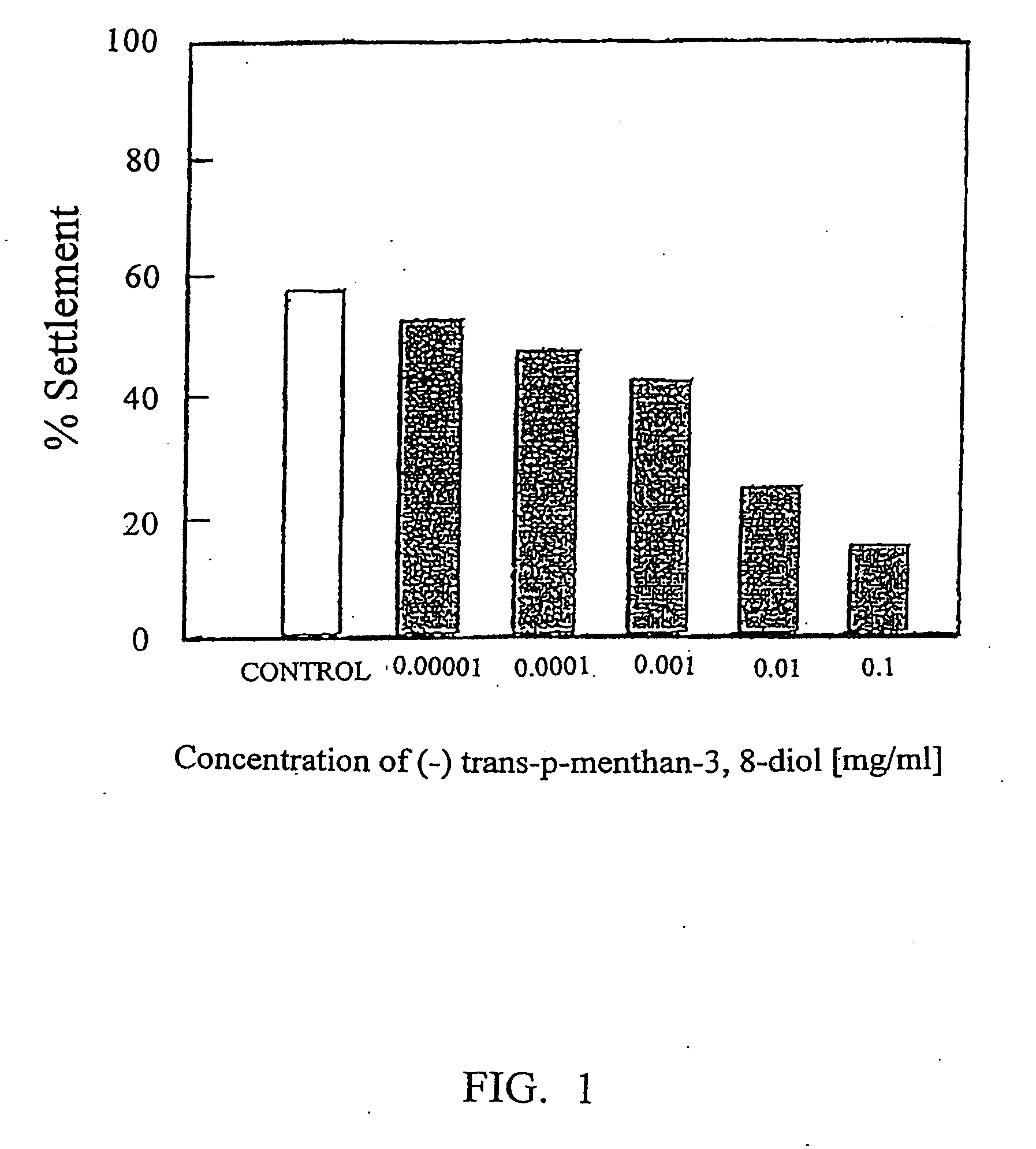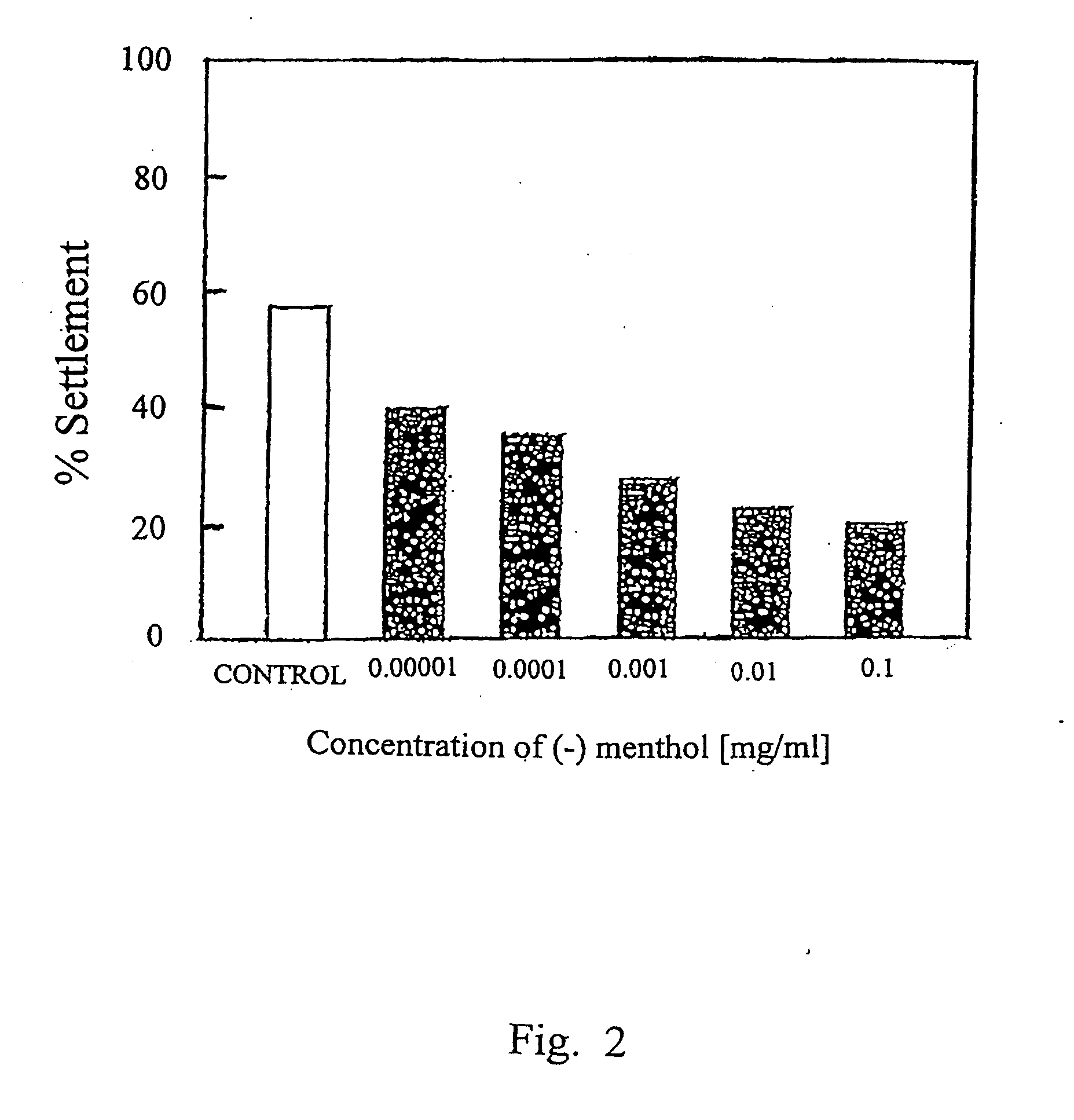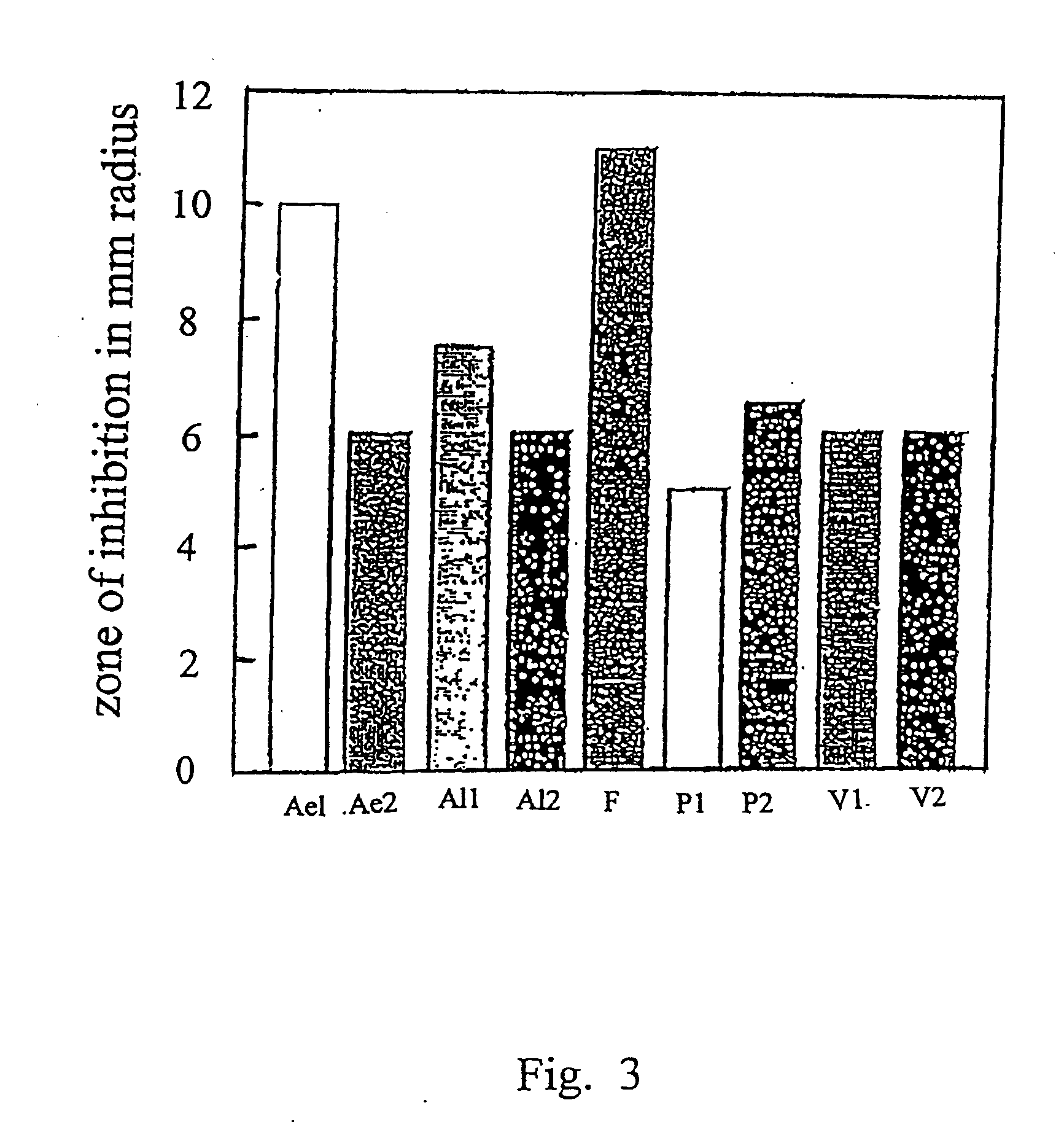Non-toxic coating composition, methods of use thereof and articles protected from attachment of biofouling organisms
a coating composition and non-toxic technology, applied in the field of non-toxic coating compositions, can solve the problems of increased fuel consumption, affecting the safety of use, and affecting the safety of use, and achieve the effects of low cost, effective protection, and safe handling
- Summary
- Abstract
- Description
- Claims
- Application Information
AI Technical Summary
Benefits of technology
Problems solved by technology
Method used
Image
Examples
example i
Antifouling Test Methods
a. Collection and Culture of Barnacles
[0052] Adults of the barnacle, Balanus amphitrite Darwin, were collected from the Sacred Heart Marine Research Center at St. Mary's College in Tuticorin, India. The barnacles were crushed and the nauplius stage larvae were collected for culture to the cyprid stage following the method of Rittschof et al., J. Exp. Mar. Biol. Ecol., 82:131146 (1984). The cyprid is the stage at which the barnacle larva is competent to attach to surfaces. Upon attachment to a surface, the larva then undergoes metamorphosis into a barnacle.
b. Settlement Assay
[0053] Barnacle settlement assays were undertaken using the method described previously by Rittschof et al., J. Chem. Ecol., 11:551-563 (1985). Briefly, Falcon 50×9 mm plastic petri dishes were filled with 5 ml of filtered seawater at salinity of 33-35 parts per thousand (ppt) and into which 3-day old cyprid stage larvae were added. The test compounds were introduced at various concent...
example 2
Antimicrobial Assays Against Marine Bacteria Associated with B. amphitrite
[0057] The effect of (−)-menthol as a bacteriostatic compound was tested against nine bacterial strains using standard agar diffusion techniques, as described previously by Avelin et al., J. Chem. Ecol., 19(10), 2155-67 (1993). The bacteria used in the test were as follows: (1) Aeronzonas sp (Ae,); (ii) Aeromonas sp (Ae,); Alcaligcnes sp (Al,); (iv) Alcaligeizes sp (A / ,); Flavobacterium sp (F); (vi) Pseudornonas sp (P,); (vii) Pseudomonas sp (P,); (viii) Vibrio sp (V,); and (ix) Vibrio sp (V2). Bacterial isolates were grown on agar medium and (−)-menthol was loaded at a concentration of 0.004 mg / ml on the 6.5 mm disks.
[0058] The data show that among the bacterial strains tested, Aeromonas sp. (Ael) and Flavobacterium sp. (F) were sensitive to (−)-menthol with a zone of inhibition having a radius greater than 10 mm. The other bacterial strains were moderately sensitive to (−)-menthol. See FIG. 3.
example 3
Antimicrobial Assays Against Marine Bacteria Associated with Perna sp
[0059] The test procedure employed was essentially the same as described in Example 2. The data obtained show that among the eight bacterial strains tested, Vibrio sp. (V, & V,) were sensitive to (−)-menthol, with a zone of inhibition having a radius greater than 8.5 mm. The other bacterial strains were moderately sensitive. See FIG. 4.
PUM
| Property | Measurement | Unit |
|---|---|---|
| concentration | aaaaa | aaaaa |
| radius | aaaaa | aaaaa |
| total volume | aaaaa | aaaaa |
Abstract
Description
Claims
Application Information
 Login to View More
Login to View More - R&D
- Intellectual Property
- Life Sciences
- Materials
- Tech Scout
- Unparalleled Data Quality
- Higher Quality Content
- 60% Fewer Hallucinations
Browse by: Latest US Patents, China's latest patents, Technical Efficacy Thesaurus, Application Domain, Technology Topic, Popular Technical Reports.
© 2025 PatSnap. All rights reserved.Legal|Privacy policy|Modern Slavery Act Transparency Statement|Sitemap|About US| Contact US: help@patsnap.com



